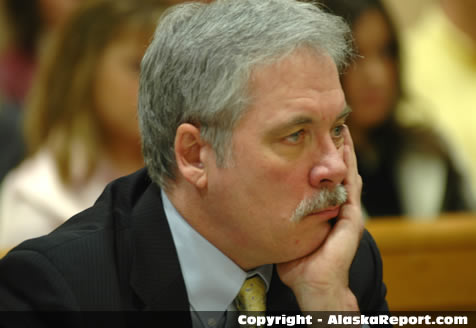Judge Thomas Schulz wondered whether the state needed Dawn Holmstrom’s testimony as badly as they seemed to think. They knew what kind of witness she was going to be, because they had taken her deposition — a deposition Judge Schulz had to preside over because the two sides couldn’t get along well enough to do it without him. To Schulz, the world would have been a lot better for Dawn Holmstrom if she’d never gotten involved in the trial.

The trouble was that Holmstrom couldn’t seem to make up her mind what the truth was and, though Phil Weidner blamed that on Bob Blasco’s intimidation, Schulz hadn’t seen any proof of that in all his dealings with the man. Perhaps, he concluded, Dawn Holmstrom just wanted out.
Dawn Holmstrom knew too many people who were involved. Everyone seemed to want a piece of her. Under the circumstances she might have preferred to remain silent.
More than anything, however, Judge Schulz noticed the transformation of Mary Anne Henry. The Peel trial was not her first appearance before Judge Schulz. She had tried a number of cases in his court, and he respected her ability. She always tried cases within her limits, didn’t try to put on a show for the jury, never tried to be somebody she wasn’t. All that had changed with the Peel case. Schulz attributed it to her dual desire to make a name for herself and beat Phil Weidner at the same time.

He also had noticed that Henry, as well as troopers Jim Stogsdill and Roy Holland, seemed to rise and fall with his decisions. If he made a decision they liked, they went out of their way to tell him. The three of them even made a point of showing up at Schulz’s church when he made a decision they liked. If he made a decision they didn’t like — the decision to keep out John Peel’s taped mutterings during his Bellingham interview was one — they pouted. And they didn’t show up in church either.
Bob Blasco, meanwhile, had developed a short fuse. Schulz saw him lose patience with witnesses, then start to argue or yell at them. His impatience was often sparked when a witness said something he wasn’t expecting — or wouldn’t say something he thought they should say. Schulz chalked it up to Blasco’s unique ability to make up his mind about something regardless of what the evidence was. And, like Mary Anne Henry, he had developed a penchant for getting even with Phillip Weidner. “If Weidner pulled one, Blasco was going to get him back,” Schulz decided.

The only people who hadn’t changed, in Judge Schulz’s estimation, were Brant McGee, Pat Gullufsen and Phillip Weidner. Schulz thought that McGee and Gullufsen were the only ones who had kept their cool and tried the case like professionals.
As for Weidner, though this was his first case in Schulz’s court, his reputation had preceded him. He was, as Schulz put it, “already one of the top three assholes in the world.”

(copyright Hall Anderson)
His style was to “put the whole system on the defensive.” He tried the cops, he tried the D.A, he tried “everybody but the defendant. And you know, it can be very effective,” Schulz noted. “Pretty soon, you know, people are looking everywhere but at the defendant.”
Excerpts from the unpublished original manuscript, “Sailor Take Warning,” by Leland E. Hale. That manuscript, started in 1992 and based on court records from the Alaska State Archive, served as the basis for “What Happened in Craig.”
Copyright Leland E. Hale (2020). All rights reserved.

Order “What Happened In Craig,” HERE and HERE. True crime from Epicenter Press.